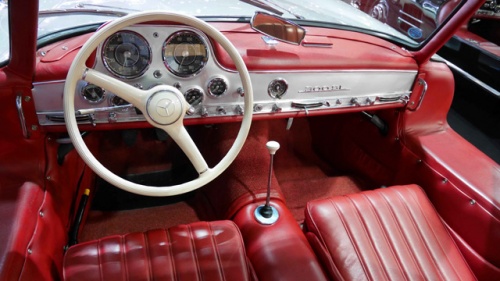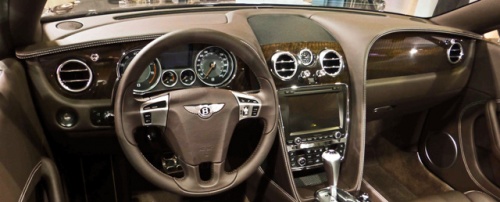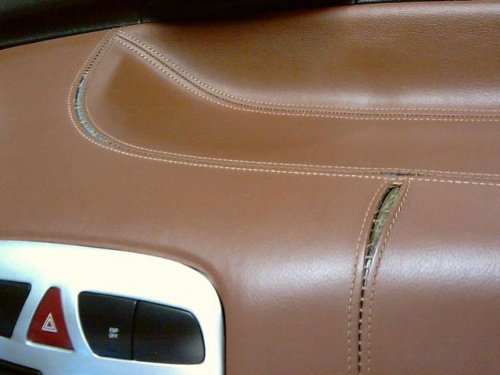Leather dashboard
Contents
Leather-covered dashboards and instrument panels
A full leather trim means dashboard and instrument panels must also be covered with leather. For saddlers and retrimmers, leather-covered dashboards pose a challenge due to the large, smooth surface with several deformations.
Dashboards are large areas, and are always viewed at an oblique angle. Therefore, the selected hides must be checked very carefully for skin damages. Only 50% of the hides are good enough to be used as dashboard leather.
Leather dashboards are mostly dark coloured with a matt finish. This is to avoid the light reflecting on the dashboard onto the windscreen. Some car owners get bright coloured dashboards only to realise later when driving that their visibility has been affected due to light reflecting on it. We recommend to keep this in mind.
For this same reason, car dashboards always have a very matt finish. Only matt surfaces are not reflected in the windshield.
Another challenge are the breaking points at the seams for airbags. These predetermined breaking points are not only reached through the seams. The leather also has a smaller thickness of about 0.45 mm sharpened (compared to 0.9 to 1.2 mm) at the crucial points, to facilitate their main purpose in need of accidents. Thus, the points are not visible, the area is strengthened by a lamination.
Latest developments in this technology include localised cutting of notches on the back of the leather, which are so thin that sometimes light symbols can be detected. With and without switch functions.
Dashboards with shrinkage of the leather by heat
Dashboards are subject to extreme heat so the adhesive must be particularly strong in these areas, and sometimes the leather is also shrunk to avoid any further shrinking issues later.
Shrunken dashboard of a Peugeot 307CC.
Adhesive detachment in leather-covered dashboard
Although not very common, sometimes the adhesive under the leather cover detaches from the moulding creating bubbles under the leather. In very rare cases you can activate the glue again and re-stick it by putting strong pressure and with the help of a heat gun. In most cases, however, this won’t work and a saddler or retrimmer must change the leather to new. Likewise, attempts to put adhesive with a syringe under the surface have also proven to be unsatisfactory. Again, the chances are extremely low, but usually there is nothing to lose and it is worthwhile attempting this as it may offer quick solution.
Adhesive detachment. Right: Ferrari F355 GTS.
Cracked dashboards
Old dashboards can break especially in warm climates. These are mostly tired plastic pieces, not covered with leather. Due to the size of the breaks, in most cases repairs are not possible and need to be replaced.
Cracked dashboards. Left: Mercedes R107 SL - Right: Mercedes SL Pagoda.
Dashboards from other materials
Normally dashboards are made of plastic or covered with leatherette or other materials. They are very rarely covered with fabrics, although Alcantara is used in higher segment vehicles.
Dashboard with Alcantara covering.
Additional information






















 a kotori web solution
a kotori web solution